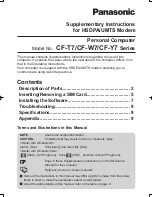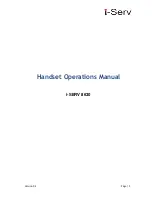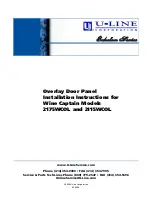
Copyright 2107 Big John Grills & Rotisseries
17
WARNINGS
FAILURE TO FOLLOW THE DANGERS, WARNINGS, CAUTIONS, AND INSTRUCTIONS OUTLINED IN THIS
MANUAL MAY RESULT IN SERIOUS BODILY INJURY OR DEATH, OR CAUSE DAMAGE TO PROPERTY BY
FIRE OR EXPLOSION.
Do not use this unit unless all parts are in place. This unit
must be assembled properly according to the assembly &
set-up instructions listed in this manual. Failure to do so is
dangerous.
Always check your unit for gas leaks and burner obstructions
before use. See instructions in this manual for correct
procedures.
Do not store or use gasoline, other flammable liquids, or
vapors in the vicinity of this product.
Do not store extra liquid propane cylinders within the vicinity
of this product.
Always position the propane cylinder so that the connection
between the valve and the regulator will not cause any sharp
bends in the hose.
Do not operate any equipment, including this unit, if there is a
gas leak present.
Do not use a flame to check for gas leaks.
Combustible materials should never be within 12 inches of
this steam table in any direction.
Do not put anything flammable in the area under the unit.
No Big John Grills & Rotisseries equipment should used by
children.
Accessible parts of the steam table may be very hot. Keep
children away when in use.
Big John equipment should never be left unattended or
moved while in operation.
You should exercise reasonable care when operating your
steam table and remember it will be hot during cooking and
cleaning.
Should the burner go out while in operation, turn off gas valve
and turn off gas source. Let stand for 5-10 minutes before
attempting to relight using the lighting instructions found in
this manual.
Clean your Big John Steam Table thoroughly on a regular
basis.
Keep any electrical cords or fuel supply hose away from
heated surfaces at all times, especially when in use.
Use heat-resistant barbecue gloves or mitts when operating
steam table.
Do not enlarge valve orifice or burner holes when cleaning.
Do not attempt to disconnect any gas fittings while your
steam table is in operation.
Do not store or lean items against steam table or fuel
cylinders while operating.
Liquid propane is NOT natural gas. The attempted use of
natural gas in a liquid propane unit or liquid propane gas in
a natural gas unit is dangerous and will void your warranty.
If you wish to change your unit from LP to NG or vice versa,
please call a Big John Customer Service Agent to obtain
required parts.
Only use the supplied hose and regulator for this unit. Do
not use one purchased from a gas company or hardware
store. Natural gas connections must be made to meet your
local codes.
Do not attempt to disconnect the gas regulator or hose
assembly while unit is in operation.
Make sure the POL or QCC Connector is free from
scratches or nicks which can cause gas leaks.
Do not paint propane tanks any color other than white. Any
alteration to tank color may result in tank purging, fire,
personal injury, or death.
NEVER store or use propane cylinders indoors.
Always keep a propane cylinder in a secure, upright position
while transporting or storing. Do not lay tanks on their side.
Never keep propane cylinders (full or empty) in a hot
vehicle. Heat could cause the relief valve to purge propane
creating a very dangerous situation.
Always keep the cylinder valve closed when not in use.
Do not store a liquid propane cylinder in/on any part of the
appliance not intended for such use. Improper storage of a
cylinder could lead an explosion, fire, personal injury, or
death.
Propane gas is denser than air and will collect in low areas.
Use caution when dealing with any such fuels.
Do not use a dented or rusted liquid propane cylinder as it
may be hazardous and should be checked by your propane
dealer.
Do not use a propane cylinder with a damaged valve.
Although your propane cylinder may appear empty, there
may still be gas present. The cylinder should be stored and
transported accordingly.
If you see, smell, or hear the hiss of gas escaping from the
liquid propane cylinder:
1. Move away from the cylinder
2. Do not attempt to correct the problem yourself.
3. Call your fire department.

































